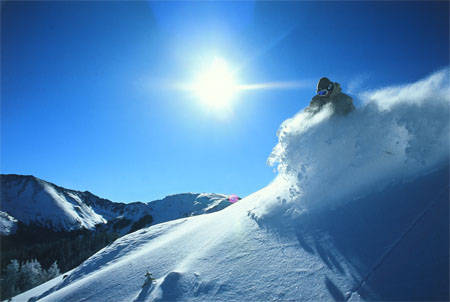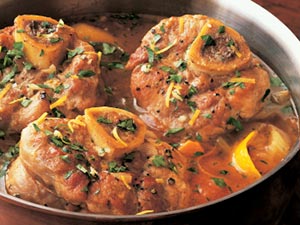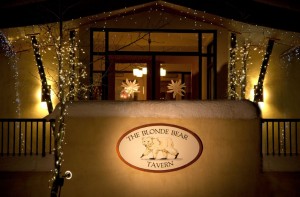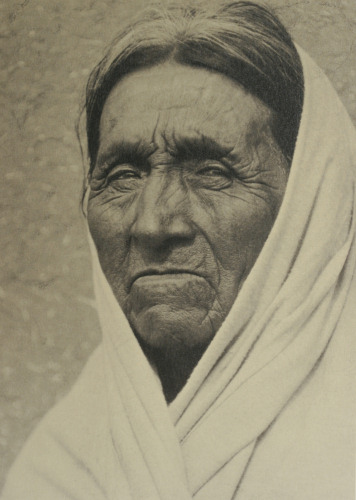
Author: Jon
In the Garden

.
One of the great pleasures of living at Taos Ski Valley’s Edelweiss Lodge and Spa is that in addition to my responsibilities for our two restaurants, I oversee the property’s lovely Alpine gardens. Okay — I am the gardener — and I love it.
I’ve always enjoyed gardening and have tilled soil since I was a kid — when I first planted a raw lima bean in some dirt behind our garage. I watered the spot religiously and within a week or two the darned thing sprouted. It was the most miraculous thing I had ever experienced. I still remember the thrill of discovering Mother Nature’s beginnings of life.
The memory of that childhood feeling came rushing back this morning as I was drinking coffee and sauntering past the oriental poppies in our front garden. The first five of our dozens of buds popped open overnight and greeted me with their beautiful salmon color, exotic form, and sensual mystery, as their long slender stems nonchalantly swayed in the morning’s quiet Alpine breeze.
Happily, photographer Jeff Caven is currently staying with us. I asked him to snap a photograph, and he kindly obliged. The lovely image is posted above.
Taos, of course, is famous for poppies, made so by its notable resident, Georgia O’Keefe. Long before artists like Robert Mapplethorpe (whose work I greatly admire) photographed sensual depictions of orchids and calla lilies, Georgia O’Keefe painted flowers, using photographic techniques such as cropping and close-ups, even before the technology of color film or large photographic blow-ups had been invented.
O’Keefe explained:
“A flower is relatively small. Everyone has many associations with a flower… still–in a way–nobody really sees a flower–really–it is so small…. So I said to myself–I’ll paint what I see…but I’ll paint it big and they will be surprised into taking time to look at it…even busy New Yorkers [will] take time to see what I see of flowers….When you [refering to critics and others who wrote about these paintings] took time to really notice my flower you hung all your associations with flowers on my flower as if I think and see what you think and see of the flower–and I don’t.”
Her most famous painting is arguably Oriental Poppies, painted in 1927 (two years before beginning her work in northern New Mexico) and is now part of the Weisman Art Museum‘s permanent collection in Minneapolis. Painted in New York, the work measures 30″ x 40″ and resembles an image as if seen through a magnifying glass. O’Keefe uses brilliant red and orange – pioneering at the time – juxtaposed with indigo of the flowers’ centers. The crisp shading and brilliant borders provide hypnotic contrast to the petals’ velvet texture. What soon became obvious to critics was the lack of context: there is no background to the painting, drawing the viewer’s focus deep into the flowers, presenting them as pure abstracts.

“Oriental Poppies”
Georgia O’Keefe (1887 – 1986)
.

And so. . . this morning I was sipping coffee, enjoying the morning sunrise above the whispering pines — and there they were: magnificent poppies that a transplanted busy New Yorker not only noticed, but celebrated. A childhood amazement returned, a connection was made with Taos and its most famous artist, and a remembrance was triggered of a New Mexican poet, Santa Fe’s May Sarton [Eleanore Marie Sarton], who once wrote:
“Everything that slows us down and forces patience, everything that sets us back into the slow circles of nature, is a help. Gardening is an instrument of grace.”
The 16th Annual Ben Myers Ridge-A-Thon
.
.
This weekend, extreme skiers and boarders from around the Southwest will descend on the rugged slopes and ridges of Taos Ski Valley for the annual Ben Myers Ridge-a-Thon.
Now in its 16th year, this grueling event attracts winter athletes — including former Governor Gary Johnson — who compete in an intense two-day skiing / boarding marathon. The event supports the Emergency Medicines Fund of the Taos Community Foundation.
This year The Blonde Bear Tavern will provide the food for the event’s awards party and celebration.
.
The Event
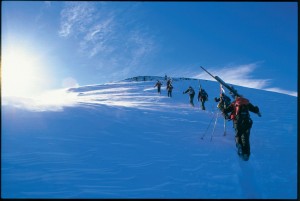
Singles or two-man teams hike and ski the extreme terrain and ridges of Taos Ski Valley non-stop for five hours. The object is to ski as many runs as possible within the time allotted. The competition ends at 2:00 pm, at which time participants may choose to hike and ski Kachina Peak, which will count as three bonus runs.
.
Taos Community Foundation’s Emergency Medicines Fund
The Fund provides vouchers for the purchase of prescription medications at wholesale cost from local pharmacies. The result is free prescriptions to eligible individuals. The Fund is an emergency alternative to more long-term assistance. Emergency Medicines supports local nonprofit organizations within Taos and western Colfax counties that are currently engaged in emergency service activities and provide assistance to undeserved individuals.
.
Ben Myers

Ben Myers was a well-known local extreme skier who died at the age of 26 of a rare cancer. His friends organized the Ridge-a-Thon in 1997 to collect money to pay his medical expenses. Today, the event helps others in similar situations.
Ben’s legacy lives on — not only his enthusiasm for skiing and Taos Ski Valley — but through this important yearly event that allows us all to help our friends and neighbors.
.
.
.
How You Can Help
Participants are currently soliciting donations, usually a set dollar amount for each run accomplished during the two days. I’m sponsoring our own Kent Forté, who is participating for the sixth year. Last year he completed 38 runs in the two days!
If you’re not familiar with a participant, please consider donating to this very worthy cause by visiting the Taos Community Foundation website.
Here’s a terrific video, which highlights Ben Myers, his dedicated friends and family, and the Ridge-A-Thon. It also shows some beautiful shots of Taos Ski Valley:
http://video.google.com/videoplay?docid=4011097246948254747&hl=en
.
.
National Geographic names Taos one of the World’s Best Ski Towns

From Aaron Teasdale:
“Just what makes a classic ski town? It starts, naturally, with skiing and snowboarding so good they attract people like youth-bestowing fountains. Then add an inviting mountain burg steeped in ski heritage, amenities, and culture. These are the 25 best.”
The article describes Taos Ski Valley as “a narrow valley engulfed by precipitous peaks. The Swiss-style chalets at the area’s base exude an old-time European character while the town itself feels like a funky Southwestern artist’s colony.”
And the skiing?
“The mountain offers some of the finest steep skiing and boarding in the U.S., with powder that rivals Utah’s for lightness. You can ski double diamonds top to bottom here. The most challenging terrain—and best powder runs—come on the hike-access West Basin and Highline ridges and the area’s highpoint, 12,481-foot Kachina Peak (check in with ski patrol before attempting). Taos operates one of the country’s most highly regarded ski schools—for beginners and the already skilled—which is good because the terrain demands it. There are no high-speed lifts here, which somehow suits the mountain’s almost mystical, apart-from-the-world vibe.”
And the best ski run:
“The classic ski run at Taos Ski Valley for experts willing to climb ten minutes is Stauffenberg, named after the Nazi army officer who plotted to assassinate Hitler. It’s a classic steep chute with hundred-mile views! For something mellower, try Honeysuckle, a long groomer that’s sunny and scenic.”
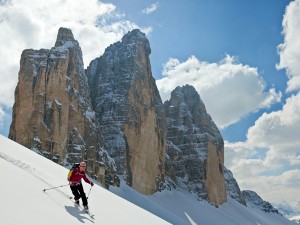
National Geographic picks another one of my favorites: Cortina d’Ampezzo, Italy, with its Enoteca Cortina wine bar and of course, Il Meloncino al Camineto.
Read the whole thing.
.
Related: TAOS!
.
26th Annual Taos Winter Wine Festival
.
I am constantly asked the question, “How do I improve my wine knowledge?” To which I always respond, “Keep drinking!” There’s no better way to familiarize yourself with wines than a wine tasting. It’s a great way to experience new vintages of your favorites, and to explore other varietals and regions around the world.
This week the Taos Winter Wine Festival will provide you such an opportunity. There are several seminars and dinners scheduled, along with two major tastings:
 The Reserve Tasting will be held at the elegant El Monte Sagrado Resort, with a dozen of Taos’ best restaurants serving signature appetizers alongside tastes of reserve wine from owners and winemakers from 30 participating wineries. This Opening Night Reserve Tasting also features a silent auction of wine to benefit the Taos High School Culinary Arts Program.
The Reserve Tasting will be held at the elegant El Monte Sagrado Resort, with a dozen of Taos’ best restaurants serving signature appetizers alongside tastes of reserve wine from owners and winemakers from 30 participating wineries. This Opening Night Reserve Tasting also features a silent auction of wine to benefit the Taos High School Culinary Arts Program.
The Grand Tasting will be held right here in Taos Ski Valley, and will feature more than 155 different wines from 30 participating wineries — and tastes from a dozen of Taos and Taos Ski Valley’s finest restaurants, including The Blonde Bear Tavern. A silent auction of rare wines benefits the Taos Community Foundation.
 For more information and tickets, visit the Taos Winter Wine Festival website. Please stop by our booth to say hello — and after the event, why not come to The Blonde Bear Tavern for dinner and a little more wine?
For more information and tickets, visit the Taos Winter Wine Festival website. Please stop by our booth to say hello — and after the event, why not come to The Blonde Bear Tavern for dinner and a little more wine?
International Day of Italian Cuisines: Ossobuco in Gremolata alla Milanese
.
The Virtual Group of Italian Chefs celebrates its 5th Annual International Day of Italian Cuisines today as hundreds of chefs in over 40 countries around the world prepare and serve Ossobuco in Gremolata using an authentic recipe.

The Blonde Bear Tavern is joining the celebration, and you can, too. Learn the history of this centuries-old iconic dish, along with an in-depth look at the optimal ingredients and their correct proportion, as we reveal our famed recipe here.
.
Ricette Classiche: Ossobuco in Gremolata alla Milanese
.
.
Italians are masters of braising meats, and ossobuco is a perfect example. Take a relatively cheap cut of meat with lots of connective tissue, Braise it until the tough tissues melt, coating the meat fibers, rendering them soft and silky. As with Brasato, the meat will develop a velvety texture and delicious, earthy flavor, but with the added luxury of unctuous bone marrow.
Ossobuco is a centuries-old Lombard recipe of cross-cut veal shanks braised with vegetables, white wine, and broth. It is typically garnished with gremolata, a combination of lemon zest, parsley, and garlic. The most traditional accompaniments to the dish are risotto alla milanese, polenta, or mashed potatoes.
The dish is famous world-wide, and its recipe has been published extensively outside of Italy. It was featured in Henri-Paul Pellaprat’s famous L’Art Culinaire Moderne, published in France in 1935, and the British Italian Food, by Elizabeth David, first published in 1954. The dish has become a part of the French home cooking tradition, known as ossobucco à la milanaise (with added butter (!)
Every January 17th — for the last five years — the Virtual Group of Italian Chefs (GVCI) promotes one authentic Italian recipe on its International Day of Italian Cuisines (IDIC). We were honored to participate the last two years with a couple of Bellavitae signature dishes: Tagliatelle al Ragù Bolognese, and Pesto Genovese. The previous years featured Pasta alla Carbonara and Risotto alla Milanese.
The International Day of Italian Cuisines is born from a mission, as explained by Rosario Scarpato, GVCI Honorary President and last year’s IDIC Director:
“We certainly aim at educating worldwide consumers, but more than anything else, we want to protect their right to get what they pay for when going to eateries labeled as ‘Italian’; that is, authentic and quality Italian cuisine.”
So in celebratory spirit we participate again this year, right here at The Blonde Bear Tavern. Ossobuco is a perfect entree after skiing all day. Come join us this Tuesday, January 17th, for our preparation of ossobuco.
Lombardy – Birthplace of Ossobuco

.
Ossobuco traces its beginnings to Lombardy (“Lombardia” in Italian), and many believe to Milan, although there is some controversy about that. Lombardy is a large region in the north of Italy. The river Po forms a natural boundary in the south, the Alps to the north, with Lakes Garda on the east and Maggiore and Como on the West.
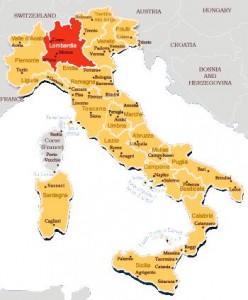
The regional cuisine of Lombardy is based upon ingredients like maize, rice, beef, pork, butter, and lard. Despite being a form of Italian cuisine, Lombard food tends to have little in common with Central or Southern Italian dishes, in many cases lacking the presence of tomato and olive oil, being more meat-based and buttery. In many ways, Lombard cuisine has much in common with that of Austria and much of central Europe in general.
But as Italian cuisine, Lombard food is full of variety and every city and part of the region offers its own specialties. A characteristic Lombard dish is risotto, most famously risotto alla milanese (which is made with saffron), with rice-based food being highly common throughout the region. Similar to risotto, maize-based dishes such as polenta are also common. Other famous Lombard dishes include cotoletta, cassoeula, and of course ossobuco. The region also offers several delicacies and desserts, including mostarda and panettone. Regional cheeses include Robiola, Crescenza, Taleggio, Gorgonzola and Grana Padano.
.
What to drink with Ossobuco
Which wines pair well with Ossobuco? Ask the expert, Luca Gardini, named the world’s best sommelier last year. His recommendations are here.
.
The History of Ossobuco
The word ossobuco (“oss bus” in Milanese dialect) means “bone with a hole” (osso bone, buco hole), a reference to the marrow hole at the center of the cross-cut veal shank.
Milan claims to be the birth city of ossobuco and in 2007, the City Council declared it as part of the De.Co. (Denominazioni Comunali or community denominations), which is an official public acknowledgement that a dish belongs to a certain territory.
The use of marrow bones and veal shanks was common in Middle Age Italian cuisine, but there is no evidence of the presence of ossobuco as a dish at that time. The recipe is believed to have first appeared in Pellegrino Artusi’s cookbook La Scienza in Cucina e l’Arte di Mangiar Bene (The Science in the Kitchen and the Art of Eating Well), the first collection of Italian national cuisine ever published. The book celebrates both home cooking and well-known dishes from all over Italy. These dishes were well-established, indicating the dish had been around for decades, most likely originating in one of the region’s osterie or trattorie.
The Ingredients (for six servings)
For the Ossobuco:
- 4 tablespoons extra virgin olive oil
- 4 tablespoons unsalted butter
- 6 veal shanks, cut 1 ½ inches thick, patted dry and tied tightly around the middle
- Salt and freshly-ground black pepper
- 2 ½ cups dry white wine
- 2 medium onions, cut into ½-inch pieces
- 2 medium carrots, cut into ½-inch pieces
- 2 medium celery ribs, cut into ½-inch pieces
- 2 cups veal or low-sodium chicken broth
- 2 Bay leaves
- 1 14.5-ounce can diced tomatoes
- ¼ cup minced fresh parsley leaves
- 2 teaspoons garlic cloves, chopped very, very fine
- 2 teaspoons grated minced lemon zest
- The best ossobuco is made from the meatier hind leg, so ask your butcher for this cut.
- Have the shanks cut no thicker than 1 ½ inches. Thicker cuts may look impressive, but need to cook longer and slower, otherwise it will end up being stringy and chewy.
- The shanks are better with the skin left on, which helps to keep the ossobuco together while it cooks. Moreover, the creamy consistency of the skin adds a fabulous mouth-feel and flavor to the final dish.
- Veal broth (not stock) is preferable in this dish, but if it’s unavailable, use chicken broth. Beef broth is not optimal here, but you can use a mixture of half beef and half chicken broth.
- Using stock in this recipe (instead of broth) will create disappointing results. Broth is subtler, and will produce an optimum flavor profile. Frankly, stock is never used in Italian cooking; if used in this recipe (with the shank’s bone marrow) will put the dish, well, over the top.
- Sometime during the 1960s or ’70s, cooks began dredging the shanks in flour before browning. I don’t particularly like this method, and find that the elimination of the technique produces a better flavor. But it’s still authentic to do so.
Preparing Ossobuco
Preheat the oven to 325°F and adjust the rack to the lower middle portion, so the Dutch oven will rest in the middle of the oven.
- Heat 1 tablespoon of the oil and 1 tablespoon of the butter in a large Dutch oven over medium heat. Season both sides of the veal shanks with salt and pepper
- Place 3 of the shanks in the pan and cook until they are golden on one side, about 6 minutes. Guild the other side of the shanks, about 6 minutes longer.
- Remove shanks from Dutch oven and place in a bowl. Off heat, add ½ cup of the white wine to the Dutch oven, scraping the bottom with a wooden spoon. Pour the liquid into the bowl of shanks.
- Return the Dutch oven to medium heat and repeat the process with the remaining 3 shanks, guilding both sides in the same amount of olive oil and butter, then placing them with the original 3 shanks. De-glaze the Dutch oven again using 1 more cup of white wine. Pour the liquid over the six shanks.
- Return the Dutch oven to medium heat and add the remaining olive oil and butter. Saute the onion until translucent. Then add the celery and Bay leaf and cook for an additional 3 to 5 minutes. Finally, add the carrot and cook for another 3 to 5 minutes, stirring occasionally.
- Increase the heat to high and add the broth and remaining 1 cup of wine. Add the tomatoes. Return the veal shanks to the pot, arranging in a single, tight layer. Ensure the open end (or larger opening) of each bone is facing up so the marrow doesn’t fall out during braising. The liquid should just cover the shanks – if not, add more broth. If there is too much liquid, remove some with a spoon.
- Bring the liquid to a simmer, then cover the pot and transfer it to the oven. Cook the shanks until the meat is easily pierced with a fork, but not falling off the bone, about 2 hours.
- Combine the parsley, garlic, and lemon zest.
- Stir half of the gremolata in the pot, reserving the balance for garnish. Let the ossobuco stand for 5 minutes, uncovered.
.
- Remove the shanks from the pot, remove the twine, and place each shank in a bowl, perhaps over polenta.
- Ladle some braising liquid over each shank, and sprinkle the gremolata over each serving.
.
Related:
- The Italian Flavor Base: Battuto, Soffritto, Trito
- Mastering the Techniques of Sautéing and Browning
- Ricette Classiche: Brasato al Barolo
- Italian Luca Gardini Named World’s Best Sommelier
.
Further Reading:
- The Official Dish of the IDIC 2012: Ossobuco in Gremalta alla Milanese
- The Italian Academy of Cuisine: La Cucina, The Regional Cooking of Italy
- Official Site: Milan
- Official Site: Lombardia
- Cooking for Engineers: Recipe File: Ossobuco
Ossobuco, the perfect winter dish, most satisfying after a vigorous run down the mountain. Too tired to make it yourself? Join us and hundreds of other chefs around the world on January 17th. Enjoy this famous dish, evolved over centuries, right here at The Blonde Bear Tavern.
.
Arte
Happy New Year!

.
The week between Christmas and New Years is busy for any ski resort, and Taos Ski Valley is no exception. But this year, the planets aligned and we were blessed with arguably the best snow in North America. Add to that perfect New Mexico weather. We prayed the skiers would come, and boy did they.
An avalanche maybe? What exuberance! Folks from all over the world converged on our village to enjoy phenomenal skiing, a happy holiday, and of course good food and wine.
One of the week’s highlights is the annual torch light parade, where skiers carrying red flares race down the mountain, followed by colorful fireworks – all against the magnificent canvas of pure white snow.
Here’s a long-exposure photograph that captures the scene:
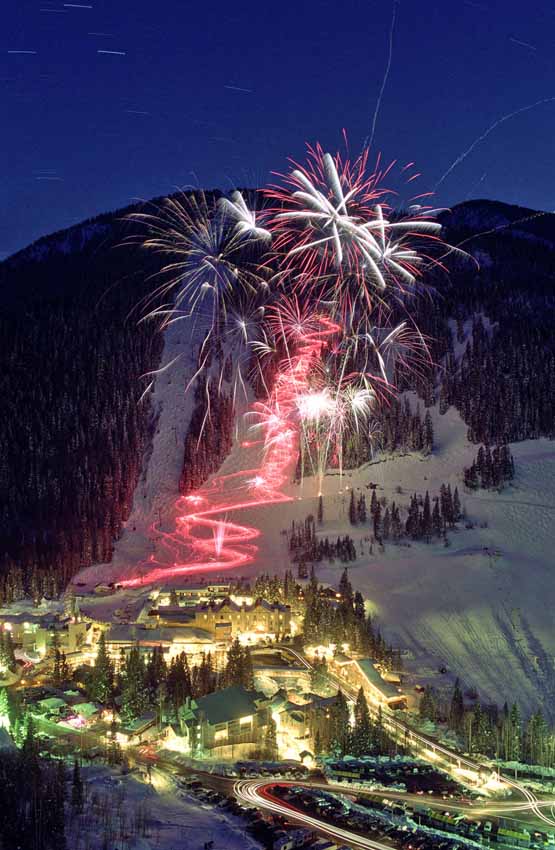
.
And here’s a video of the event:
.
Yeah, we’re a little pooped, but what a way to ring in the new year!
So from all of us at The Blonde Bear Tavern:
.
Delicious Wishes
Drink wine and enjoy good dishes
.
Here’s to a prosperous new year:
Just as you ski here
Approach with no fear.
.
Buon Anno!
.
